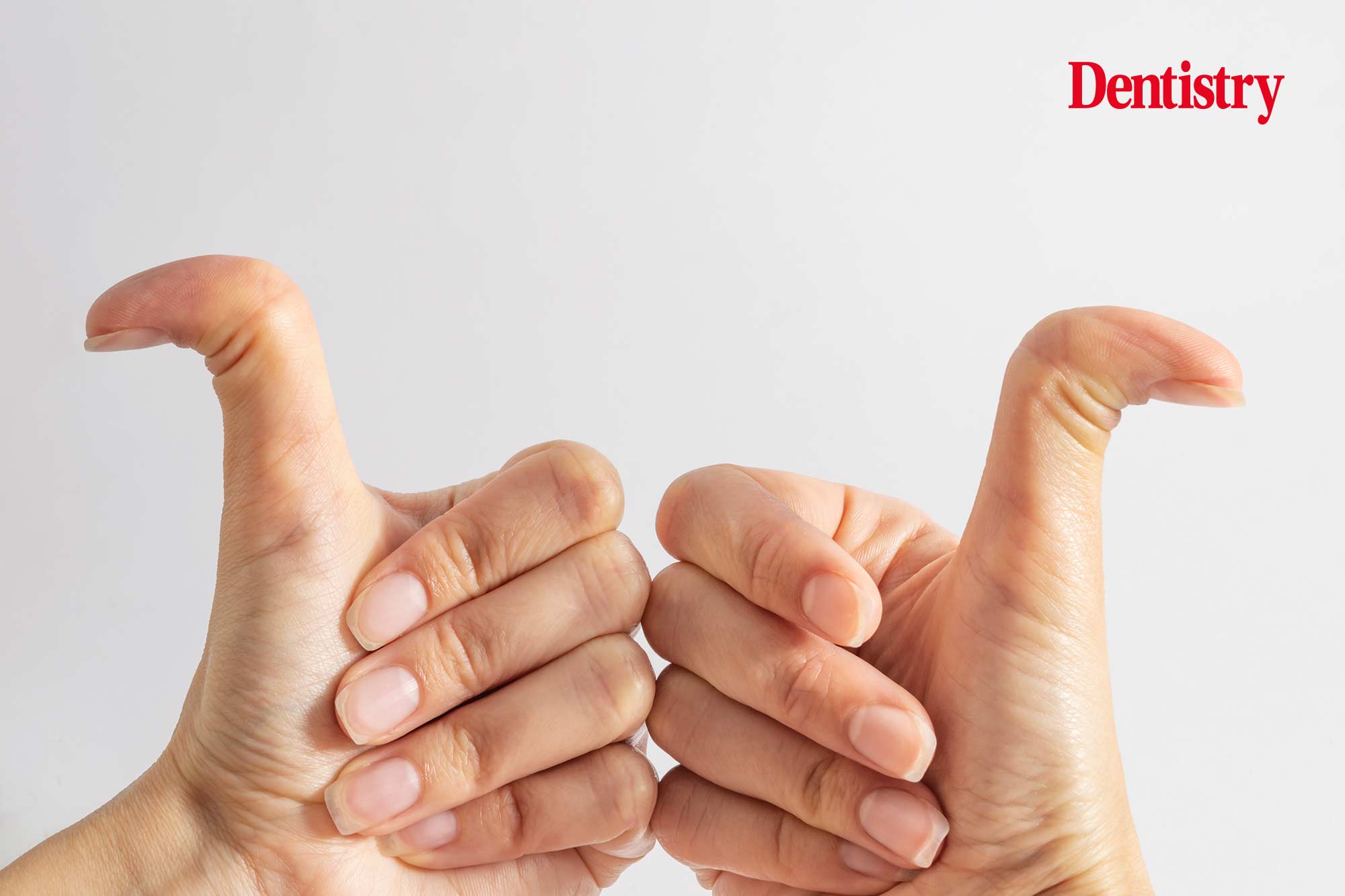
As May marks Ehlers-Danlos syndrome (EDS) Awareness Month, Matt Everatt sheds light on what this unfamiliar and misunderstood condition is and why the dental profession should be aware of it.
My wife has recently been diagnosed with Ehlers-Danlos syndrome (EDS), a genetic connective tissue disorder.
EDS is characterised by joint hyper-mobility, skin hyper-extensibility and variable tissue fragility, along with a myriad of multi-system disorders. The current 2017 Villiefranche EDS classification distinguishes 13 different types with varying clinical manifestations.
The vast array of symptoms my wife has had over the years has sadly, until a few months ago, been misunderstood and, dare I say, misdiagnosed. It seems obvious to us now. Others have described similar misdiagnosis as a light bulb moment.
My wife was diagnosed in her teens as having hypermobility syndrome and was just labelled ‘the bendy one’. Sadly, EDS has hit her hard in the last few months and, as we are finding, it’s the syndrome that keeps on giving!
As it’s EDS awareness month, I wanted to share a bit about the dental implications. This is because some of you may have patients with EDS, or they could be undiagnosed with EDS symptoms.
The Ehlers-Danlos Society website states that the average time it takes to diagnose EDS is 10-12 years, with it often being misdiagnosed as fibromyalgia, myalgic encephalomyelitis (ME), or atypical facial pain to name a few. This delay leads to much physical and psychological harm.
Dental and oral implications
As EDS is a connective tissue disorder, soft tissues, bone and teeth can all be affected. Bone loss and periodontal disease is likely to be more prevalent, with soft tissues being easily damaged due to collagen defects.
TMJ problems and headaches
The temporomandibular joints (TMJ) and ligaments are commonly affected. Dislocations, open and closed locks are relatively common, as are cervicogenic headaches, migraines and muscle soreness.
Patients with EDS can have craniocervical instability (CCI). It is very easy to label these patients as ‘TMD patients’, which, in itself, is problematic as it is not a diagnosis – it is simply another symptom of a complex syndrome.
Local anaesthesia complications
As many as a huge 88% of EDS patients report anaesthetic resistance as being either complete, partial or rapidly waning in effect. This is reported across all available anaesthetics, with articaine 4% offering only marginal benefit.
Much of the medical and dental profession are still unaware of this link, with many patients being gaslighted by their healthcare providers.
Dentists can identify EDS
I have spoken to GDC specialist oral surgeon, Dr Audrey Kershaw, about EDS and how she is helping this common but poorly managed group of patients.
‘If you can’t connect the issues, think connective tissues,’ Audrey said.
This is a common phrase amongst those in the EDS community. Since 2017 she has taken an interest in hyper-mobility disorders and feels this is an area where we can make a real difference to patients’ lives. She also stresses that understanding EDS can make the dental team’s life much easier too.
Audrey also said: ‘Four years ago I started seeing a pattern emerge with my oral surgery patients with local anaesthesia issues, several medical issues, and being of a certain character type. I have read widely into these areas and have completed the 10 week ECHO course with the Ehlers-Danlos Society.
‘This has allowed me to identify these patients and issues so I can help these patients through their treatment. I see at least one or two of these cases each week. My hope is to share this knowledge with colleagues and peers so we can together help as many patients as we can.
‘As dentists we are in a perfect environment to identify EDS patients. Once we understand a little about the condition, we can begin to appreciate the relevance of hyper-mobility syndromes to dentistry.
‘Over the past few years I have been delivering CPD sessions to dentists and other healthcare professionals with the aim of helping them understand EDS more and how they have a huge role to play in identifying possible cases and managing them accordingly.
‘Some typical issues EDS patients suffer with are failure of local anaesthetic, molar-incisor hypomineralisation (MIH), speed and pain of orthodontics, TMJ issues, anxiety and many multi-system disorders.’
Dentistry’s top stories
Educating the profession
Having awareness campaigns such as EDS Awareness Month and running CPD courses for dentists is so important. We want dentists to be able to recognise the multi-system signs and symptoms in patients with hyper-mobility disorders, and to show greater understanding and be able to modify treatment to accommodate this group’s needs.
Most importantly, we must know when and where to refer these cases for them to get help for their medical issues.
Click here to visit the EDS Society support page where you can find a little more about the dental implications. I do hope it’s helpful.
We hope to continue to raise awareness and plan to run study sessions for dental and other healthcare professionals in the near future. If you are interested in learning more, email hello@oralsurgery.scot or visit www.oralsurgery.scot.
Ehlers-Danlos Support UK: www.ehlers-danlos.org.
For references, contact lucy.veal@fmc.co.uk
Follow Dentistry.co.uk on Instagram to keep up with all the latest dental news and trends.

